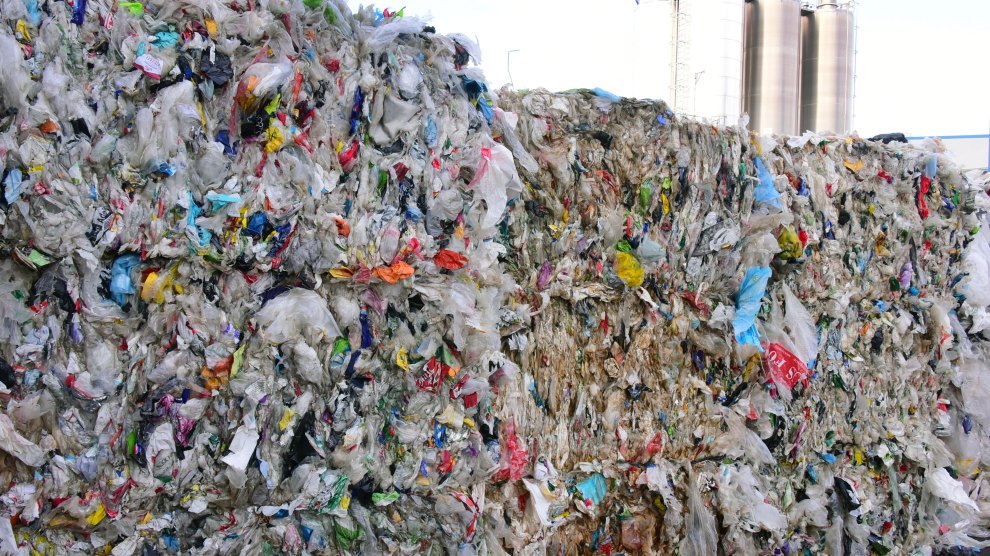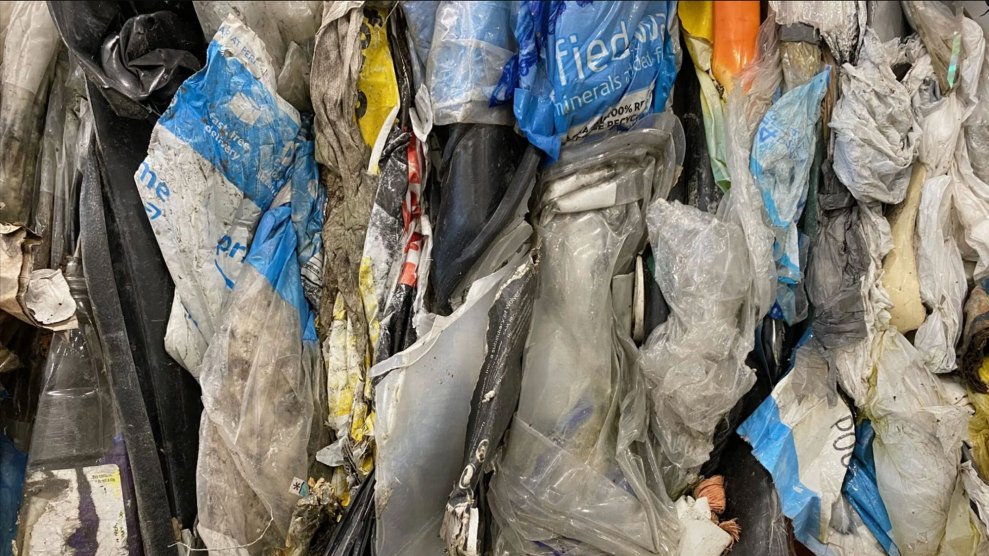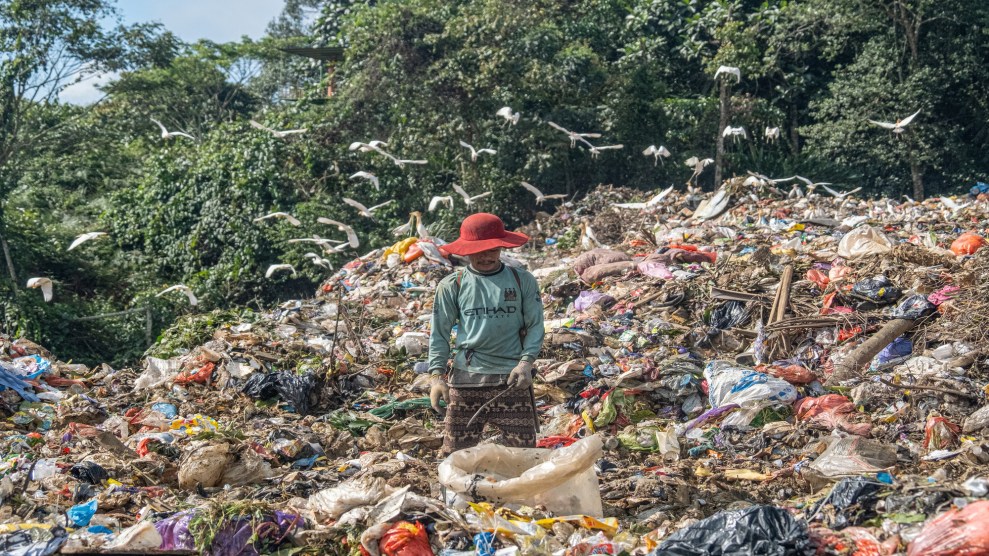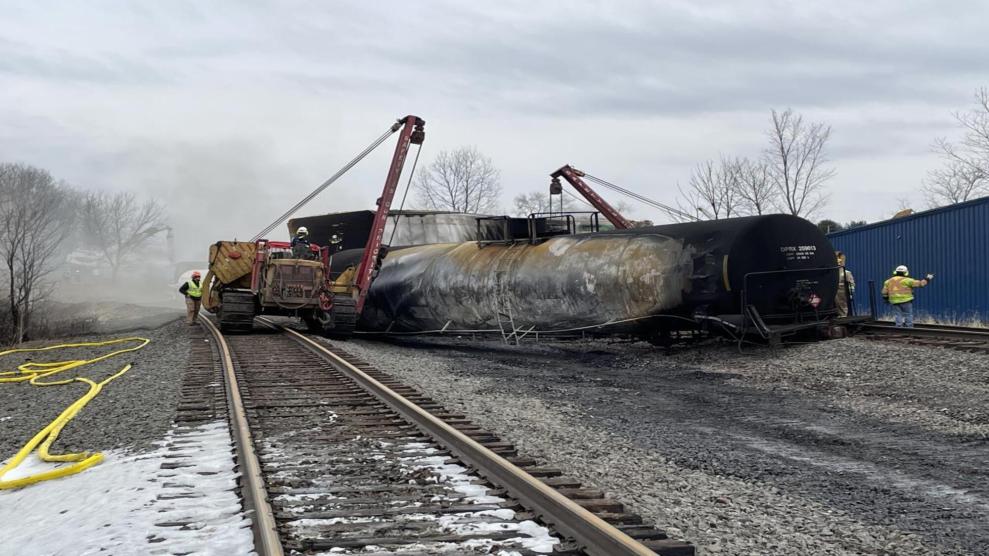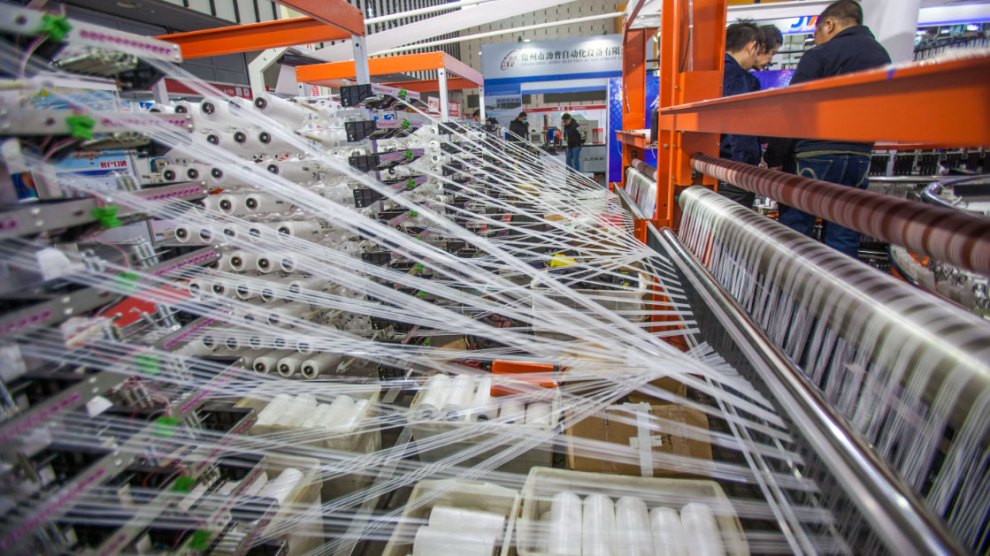
Scene from a recent plastics industry exposition in Nanking, China.Cfoto/DDP via ZUMA Press
This story was originally published by Grist and is reproduced here as part of the Climate Desk collaboration.
During the second round of negotiations for a global plastics treaty in Paris this week, diplomats have clashed over competing priorities—including the role of recycling and how to address toxic chemicals. But some experts are arguing that one issue in particular should anchor the ongoing talks: climate change.
“It’s not just a plastics crisis; it’s a climate crisis,” said Kristen McDonald, senior director of the China program for the nonprofit Pacific Environment. “Everyone should be coming away from the global plastics treaty table this week understanding that.”
Indeed, plastics are made from fossil fuels and cause greenhouse gas emissions at every stage of their life cycle. The plastic industry’s global carbon footprint in 2020 was 1.3 billion metric tons—twice as big as Canada’s—and it’s expected to grow as fossil fuel companies seek to offset declining demand for oil and gas used in the power and transportation sectors.
Now, a new report from Pacific Environment urges world leaders to center that climate connection as they design a legally binding treaty on plastics—by the end of 2024, if everything goes according to schedule. It calls for the diplomats involved in the plastic talks to adopt a Paris Agreement-style target of limiting global warming to 1.5 degrees Celsius (2.7 degrees Fahrenheit), and says that doing so will require a 75 percent cut in global plastic production by 2050.
